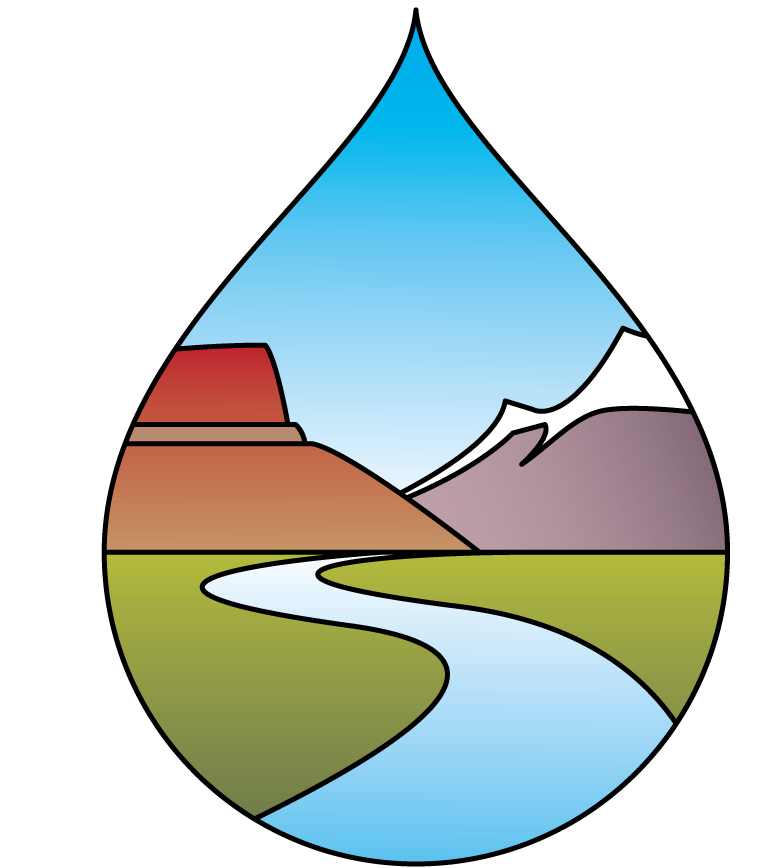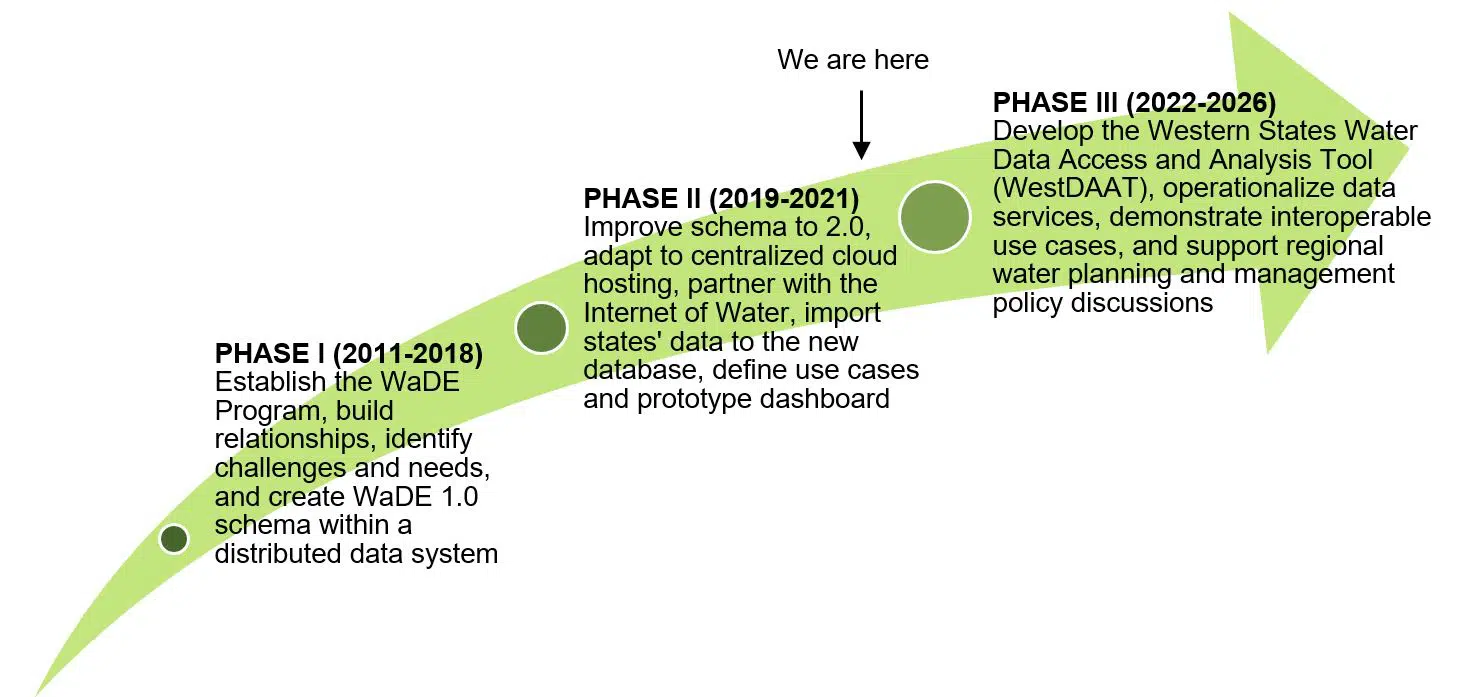Background
The Water Data Exchange (WaDE) Program began in 2011 under a subcontract with the Western Governors Association (WGA), as a cooperative effort between WSWC and the Sandia National Labs, with funding from the Department of Energy made available under the American Recovery and Reinvestment Act (ARRA) of 2008. It was subsequently sustained with WSWC funds and in-kind support through participation from our member States that committed staff and resources, as well as sharing data, without which WaDE would not be possible. Other early funding came from the Environmental Protection Agency’s Exchange Network (EN), as well as funding from the Cynthia and George Mitchell Foundation, the Water Funders coalition, and the Gordon and Betty Moore Foundation, through the Internet of Water and Duke University.
The focus of the WaDE program is to provide a framework for states to share important water data with each other, with federal agencies, and with the public with an emphasis on enabling regional analysis. States make their water data available to the WaDE platform, which streamlines the data into standardized and machine-readable formats. Making the water data accessible enables users to answer regional and national questions about water availability, scarcity, and resilience in a cost-effective, sustainable, and consistent way. With the continuous support of the Western States’ Governors, natural resource agency directors, state engineers, and their staff, the WaDE Program is approaching its 10th anniversary and entering an exciting third phase (Figure 1).
In this third phase, we will develop a user-friendly dashboard called the Western States Water Data Access and Analysis Tool (WestDAAT), an operational decision support and planning tool that will streamline the sharing of water data for western states. The WaDE Program has progressed from its initial concept and creation phase (2011-2018), which established working relationships with states agencies and created data sharing protocols while building and populating a collaborative data management system in response to interest and funding from the WSWC States, federal agencies (DOE, EPA), and philanthropic groups. In its second phase (2019-2021), WaDE created a template for transforming disparate state water-related data systems into a functional regional and cloud-based data system with standards and metadata. These data services help streamline access to water rights and water use data.
WaDE is one of the major data hubs within the Internet of Water project https://internetofwater.org/resources/hubs/. In addition, a WaDE metadata dictionary that includes controlled vocabularies is considered as the standard method for sharing state agency water use data between WaDE and the U.S. Geological Survey (USGS) Water Use Data Research (WUDR) Program (https://water.usgs.gov/wausp/wudr/).
WaDE Work Plan 2022-2025
In this third phase of the WaDE Program, we identified the following seven main tasks that we will work on for the next five years. The Work Plan document which elaborates on these tasks can be downloaded here WaDE_5rs_workplan_09_01_2021
- Provide access to water rights data including point of diversion (POD), place of use (POU), and regulatory overlays
- Provide access to aggregate water use data
- Develop an operational WaDE dashboard (WestDAAT)
- Incorporate federal water rights ownership interests recognized by states or court decrees, or settlements, and map water rights on federal lands
- Streamline the sharing of western states’ site-specific time-series water use data with USGS as part of the national water assessment and use reporting
- Provide access to site-specific time series reservoir and gage stations water data
- Conduct outreach and pilot projects to develop “personas” and use cases and sustain the WaDE Program and its dashboard


0 Comments